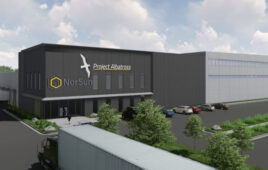The U.S. International Trade Commission (USITC) released its midterm report on the crystalline silicon PV (CSPV) cell and module tariffs that have been in effect since 2018. The commission did not take a direct stand but did note that the industry has seen mixed results from the Section 201 tariffs. The report has been sent to the President and Congress.
“The price declines for CSPV cells and modules were directionally consistent with the historical downward trend in prices for CSPV products, though parties agreed that the prices were higher than they would have been without the safeguard measure,” the report states.
The solar panel tariff currently stands at 20%, with bifacial modules and some panels using interdigitated back contact (IBC) technology the only panel types exempt from the tariffs. The U.S. Trade Representative is also currently seeking public comments on whether to continue granting bifacial solar panels an exemption.
“The U.S. International Trade Commission’s report confirms what we’ve been saying all along. While the solar tariffs have resulted in some new U.S. manufacturing investments, total domestic cell and module capacity falls far short of demand. The tariffs have effectively constrained solar development in the United States,” said Abigail Ross Hopper, president and CEO of SEIA. “On behalf of more than 10,000 U.S. solar companies and 242,000 American solar workers, we are asking President Trump to give American solar companies the certainty to move forward on billions of dollars in new investment.
“Let’s work together on solutions that advance American-made products and that build a stronger clean energy economy for all Americans. An added tariff burden, most certainly is not the answer.”
According to the USITC, several participants in the midterm investigation have suggested modifications to the tariffs. The commission will provide advice on the possible economic effects of certain tariff modifications in an upcoming report.





The biggest problem in USA is the mindset, US producers aim at US market only, they’re egocentric (applies to cars, cellphones, 5G networks etc similarly). Exports are occasional and random based. Chinese producers eye yes the US-market, but they produce globally, they are not just looking at their domestic (growing although) needs. So they don’t look at producing 10,000 panels for use at home, they will do one million instead, which brings enormous cost advantage. Maybe only Tesla showed real entrepreneurship by building up in the USA some serious new manufacturing. Not sure how safeguard measures (which are also limited seriously in time by WTO rules), can change the rest of minds. Of course servicing the solar plants brings more jobs, but why not add manufacturing jobs, because that brings back also research and development. If not the USA become only dummies in applying Chinese technology …
Agreed, the effects of the tariffs have been mixed. Obviously, the increase in prices makes it harder for installers to achieve cost-competitiveness with utility power, especially in places like Florida where energy prices are so low. We have seen a decrease in business as a result, but it is hard to isolate the effects since there are so many factors which influence PPW. On the flip side, it’s great to have Hanwha right across the line in Georgia. This is something we won’t be able to truly understand until a much longer time period has passed.
““The U.S. International Trade Commission’s report confirms what we’ve been saying all along. While the solar tariffs have resulted in some new U.S. manufacturing investments, total domestic cell and module capacity falls far short of demand. The tariffs have effectively constrained solar development in the United States,” said Abigail Ross Hopper, president and CEO of SEIA. “On behalf of more than 10,000 U.S. solar companies and 242,000 American solar workers, we are asking President Trump to give American solar companies the certainty to move forward on billions of dollars in new investment.””
It is interesting the SEIA has become ‘that’ large a lobbying entity once reserved for financial companies and big oil. When first proposed it was said that the tariffs would create something like 125,000 job losses in the installation field. With automation in manufacturing plants now-a-days, one can open a solar PV plant that turns out GW of panel products with fewer than 1,000 employees. So, when one ‘doesn’t’ get a new plant or losses a solar PV manufacturing plant, the high ratio of jobs is on the installation end not the manufacturing end. The ancillary services market is where jobs would be created, designing, procuring, installing, maintenance and repair of solar PV facilities either on homes, businesses or on acres of land in a solar PV farm. Notice that generation plants like old coal fired plants have maybe three shifts of workers and 500 employees total for the fueled operation. When replaced by a very large solar PV farm, it may take over 1,000 employees to install the solar PV plant, then the plant itself can be maintained by 50 employees and contracted CIP for the rest of the generation facility’s life. With solar PV after 10 years online, it would be possible to increase the plant’s output by replacing strings of solar PV cells with the latest/greatest cell technology and the latest/greatest inverter technology. Energy storage is becoming the next big thing and will require specific knowledge and training from application, to wiring, to operation and safety when things go wrong.